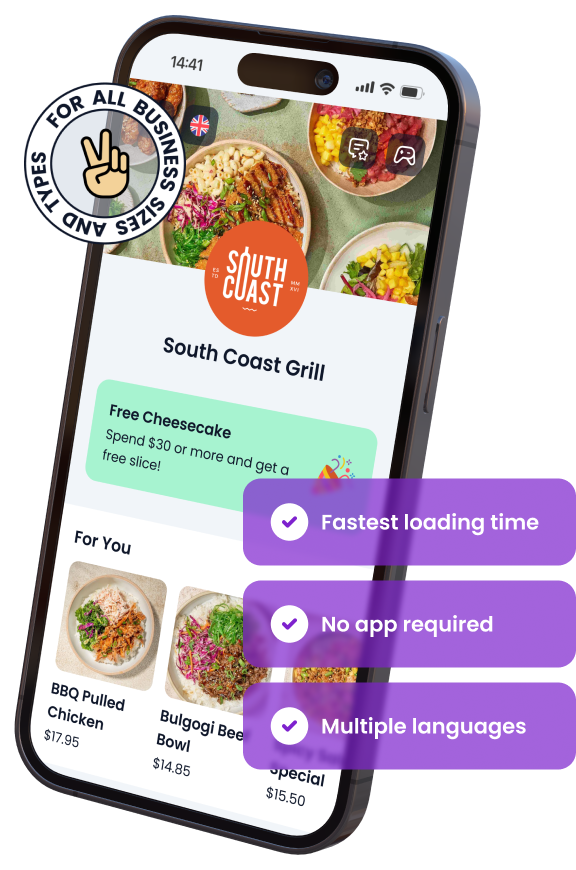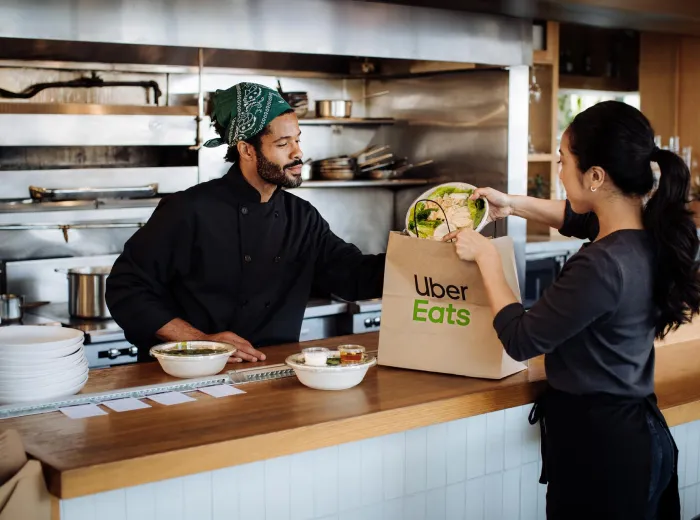

What Background Music Should You Play In Your Restaurant?
Music is more than just entertainment—it’s a powerful tool that can transform the atmosphere of your restaurant and shape the experiences of your customers. Whether you own a cozy café, a fine dining establishment, or a trendy fast-food joint, the right background music can set the tone, reinforce your brand identity, and even influence customer behavior.
When chosen carefully, background music can:
- Enhance the dining ambiance: Create a mood that complements your restaurant’s theme.
- Impact customer psychology: Encourage longer stays, repeat visits, and higher spending.
- Strengthen brand recognition: Align your music choices with your restaurant’s identity for a cohesive experience.
However, selecting the ideal soundtrack isn’t as simple as pressing play. From understanding customer demographics to navigating music licensing laws, there are many factors to consider. This guide will help you uncover the strategies and best practices for choosing the perfect background music for your restaurant, ensuring every note works to enhance your success.
Why Background Music Matters in Restaurants
Background music isn’t just a finishing touch; it’s a fundamental part of creating the right atmosphere for your restaurant. It influences how customers perceive their experience, how long they stay, and even how much they spend. Understanding its impact can help you leverage music as a strategic tool to enhance customer satisfaction and boost your bottom line.
Enhancing the Dining Experience
Music has the power to elevate an ordinary meal into an unforgettable experience. It engages the senses and creates a mood that aligns with the ambiance of your restaurant.
- Fine dining settings benefit from soothing genres like classical or jazz that convey sophistication.
- Casual eateries can enhance a relaxed vibe with acoustic or indie playlists.
By curating the right music, you create an emotional connection with your guests, encouraging them to return for the atmosphere as much as the food.
Impact on Customer Behavior
The music you play directly affects how your customers behave and interact within your space.
- Tempo: Slow music encourages leisurely dining, while faster beats promote quicker table turnover.
- Spending patterns: Studies have shown that customers spend more when music complements the atmosphere.
- Duration of stay: Pleasant background music makes customers feel welcome and comfortable, leading to longer visits.
Understanding these behavioral cues allows you to use music strategically, whether your goal is to optimize turnover or create a relaxed dining environment.
Music and Your Brand Identity
Your music choices say a lot about your restaurant. They should reflect your brand’s values, target audience, and overall theme.
- A chic, modern bistro might use electronic beats to communicate a trendy vibe.
- A family-friendly diner might play upbeat, nostalgic tunes to appeal to multiple generations.
- A cultural restaurant can feature traditional or regional music to immerse diners in an authentic experience.
When your music aligns with your brand, it strengthens your identity and makes your restaurant more memorable.
Choosing the Right Genre for Your Restaurant
Selecting the right music genre is crucial to creating a cohesive atmosphere that matches your restaurant’s theme and appeals to your customers. The genre you choose can either enhance the dining experience or detract from it. Here’s how to ensure your music resonates with your clientele and aligns with your establishment’s identity.
Popular Genres for Different Restaurant Types
Different restaurant styles benefit from specific music genres that complement their ambiance and dining experience.
- Fine dining restaurants:
- Classical, jazz, or soft instrumental music conveys sophistication and elegance.
- Helps create a serene and luxurious environment.
- Casual dining restaurants:
- Acoustic, indie, or easy-listening pop offers a relaxed and friendly vibe.
- Encourages casual conversations and extended visits.
- Fast-food restaurants:
- Upbeat and energetic genres like pop, electronic, or modern hits drive faster customer turnover.
- Themed restaurants:
- Genre-specific music, such as reggae for a Caribbean theme or mariachi for a Mexican venue, reinforces the restaurant’s identity.
Matching your genre to your restaurant type enhances the overall dining experience and helps set the tone for your brand.
Matching Music to Your Customer Demographics
Understanding your target audience’s preferences is essential for choosing the right genre.
- Age groups:
- Millennials and Gen Z diners may prefer modern pop, electronic, or indie playlists.
- Older audiences might enjoy jazz, classical, or nostalgic hits from previous decades.
- Cultural influences:
- Regional or traditional music often resonates with customers in culturally focused restaurants.
- Behavioral insights:
- Analyzing customer feedback or playlists from similar establishments can guide your choices.
Tailoring music to your demographics creates a personalized experience that resonates with your audience and keeps them coming back.
Aligning Music with Time of Day
The time of day can dictate the mood you want to set with your music.
- Morning:
- Soft, uplifting tunes like acoustic or light jazz energize early diners without overwhelming them.
- Afternoon:
- Light and cheerful melodies like indie or pop can maintain a positive atmosphere during lunch hours.
- Evening:
- Relaxing or sophisticated music such as classical or lounge tracks sets the tone for dinner service and encourages a leisurely pace.
Adapting your playlists to different times ensures your restaurant’s atmosphere evolves seamlessly throughout the day.
Psychological Effects of Background Music
Background music in your restaurant goes beyond creating ambiance—it directly impacts the psychology of your customers. From influencing how they perceive time to encouraging certain behaviors, understanding these effects allows you to use music as a strategic tool to enhance their dining experience.
Music and Customer Psychology
Music profoundly affects how people feel and behave, even subconsciously.
- Tempo and speed:
- Faster music leads to quicker eating and shorter stays, which can be ideal for fast-food establishments.
- Slower music promotes leisurely dining, making it perfect for fine dining or cafes.
- Emotional triggers:
- Upbeat tracks evoke happiness and excitement, ideal for creating a lively environment.
- Nostalgic tunes can evoke fond memories, enhancing the emotional connection with your brand.
By leveraging these psychological cues, you can craft a dining experience that aligns with your operational goals and customer expectations.
Volume Control
The volume of your background music significantly impacts the overall experience, influencing both customers and staff.
- Comfortable noise levels:
- Music that’s too loud can overpower conversations and create a stressful atmosphere.
- Music that’s too soft may go unnoticed, failing to contribute to the ambiance.
- Balancing energy and calmness:
- Moderate volumes energize the environment without overwhelming diners.
- Adjusting the volume for peak hours or quiet times ensures a balanced atmosphere.
Effective volume control enhances comfort for guests and improves staff productivity by maintaining a pleasant working environment.
Building Connections Through Familiar Tunes
Recognizable songs play a key role in creating positive associations with your restaurant.
- Familiarity breeds comfort:
- Customers are more likely to feel at ease when they hear songs they know and enjoy.
- Balanced variety:
- Incorporating familiar tunes while introducing new music keeps your playlists fresh and engaging.
Using familiar music strategically helps foster a connection with your audience, leaving a lasting impression and encouraging repeat visits.
Legal and Licensing Considerations
Using background music in your restaurant isn’t just about picking the right tracks—it also requires compliance with music licensing laws. Failing to adhere to these regulations can result in hefty fines, so it’s crucial to understand your obligations and avoid common pitfalls.
Understanding Music Licensing
When you play music in a commercial space, you need a public performance license to legally broadcast it.
- Why licensing is required:
- Music creators and performers deserve compensation for their work.
- Licensing ensures you’re supporting the artists behind the music.
- Licensing organizations:
- BMI (Broadcast Music, Inc.), ASCAP (American Society of Composers, Authors, and Publishers), and PRS (Performing Right Society) are major licensing bodies.
- Each organization represents different catalogs, so you may need multiple licenses depending on your playlist.
Acquiring the right licenses ensures your music use is legal and avoids interruptions to your business operations.
Avoiding Common Legal Pitfalls
Navigating music licensing can be tricky, and some mistakes are more common than others.
- Using personal streaming accounts:
- Platforms like Spotify or Apple Music prohibit commercial use of personal accounts.
- Opt for business-focused services like Soundtrack Your Brand or Mood Media instead.
- Ignoring license requirements:
- Playing unlicensed music can result in fines and even lawsuits.
- Ensure you research and obtain the necessary licenses for your region.
- Relying solely on live performances:
- Even live music requires a performance license if it covers copyrighted material.
Proactively addressing these potential issues keeps your restaurant compliant and avoids unnecessary legal trouble.
Streamlined Solutions for Licensing
Managing music licensing doesn’t have to be complicated, thanks to modern solutions.
- Music subscription services:
- Platforms like Pandora for Business or Soundtrack Your Brand include licensing in their fees, simplifying compliance.
- Outsourcing:
- Some companies handle music curation and licensing for you, ensuring you’re fully covered.
Leveraging these solutions saves time and ensures you meet all legal requirements while maintaining the perfect playlist for your restaurant.
Crafting the Perfect Playlist
Creating the perfect playlist for your restaurant involves more than simply choosing songs you enjoy. It’s about curating a selection that complements your brand, appeals to your customers, and adapts to different times and moods. With careful planning, your playlist can become an integral part of the dining experience.
Tools and Platforms for Curating Music
Modern technology makes playlist creation easier than ever. Several tools and platforms are tailored for businesses, ensuring both variety and legal compliance.
- Popular tools for businesses:
- Spotify for Business: Offers extensive playlist options and easy customization.
- Soundtrack Your Brand: Specializes in licensed music for commercial use with advanced scheduling features.
- Mood Media: Provides curated playlists that match your restaurant’s vibe and brand identity.
- Benefits of pre-made playlists:
- Saves time and effort while ensuring a professional and cohesive selection.
- Includes access to legally licensed music.
By using these platforms, you can streamline your music management while maintaining a high-quality audio experience for your customers.
Customizing Playlists for Your Brand
A one-size-fits-all approach rarely works when it comes to restaurant playlists. Tailoring your music to reflect your unique brand helps create a memorable dining experience.
- Aligning music with your theme:
- For a rustic café: Use acoustic or folk tracks to evoke warmth and charm.
- For a chic urban bistro: Incorporate modern, electronic beats or ambient sounds.
- Seasonal or event-based playlists:
- Holiday music during festive seasons.
- Special playlists for themed events like Valentine’s Day or local festivals.
Customizing your playlist ensures that your music isn’t just background noise but an extension of your restaurant’s identity.
Testing and Adjusting Your Selections
Once you’ve crafted a playlist, testing and refining it ensures it hits the right notes with your audience.
- Gathering customer feedback:
- Use comment cards, surveys, or casual conversations to understand customer preferences.
- Observing behavior:
- Watch how music impacts customer behavior, such as time spent dining or interaction levels.
- Rotating tracks:
- Regularly update your playlist to keep it fresh and prevent over-familiarity.
Testing and adapting your playlist allows you to continuously optimize the customer experience, ensuring your music remains relevant and impactful.
Trends in Restaurant Background Music
As the hospitality industry evolves, so do the trends in background music. Staying updated on these trends allows you to keep your restaurant’s ambiance modern, appealing, and competitive. From innovative technologies to creative approaches, here are the latest trends shaping how restaurants use music.
Ambient and Chill Vibes
The rise of minimalism in restaurant design has brought ambient and chill music to the forefront.
- Characteristics of ambient music:
- Soft, instrumental tracks with minimal vocals.
- Designed to create a relaxing atmosphere without drawing too much attention.
- Where it works best:
- Modern fine dining establishments, upscale lounges, and cafés.
- Benefits:
- Encourages slower dining, enhancing customer satisfaction.
- Pairs seamlessly with minimalist interior designs.
Ambient and chill vibes provide a sophisticated backdrop that enhances the overall dining experience.
AI-Generated Music
Artificial intelligence is revolutionizing how restaurants curate their music. AI tools can create custom playlists that adapt to real-time conditions.
- Capabilities of AI-generated music:
- Personalizes playlists based on customer demographics or feedback.
- Adjusts tempo and tone dynamically during busy or quiet hours.
- Popular AI music platforms:
- Amper Music and Endel for real-time adaptive tracks.
- Advantages:
- Ensures your playlist always feels fresh and on-brand.
- Reduces time spent on manual curation.
AI-generated music offers a cutting-edge solution for restaurants seeking to stay ahead of the curve while maintaining a personalized experience.
Live Performances and Hybrid Playlists
Blending live music with pre-recorded tracks is becoming a popular trend in creating dynamic dining experiences.
- Live music events:
- Hosting local artists or themed music nights brings a unique charm.
- Attracts customers seeking a special dining experience.
- Hybrid playlists:
- Combining live and recorded music ensures continuity during breaks.
- Creates a seamless atmosphere while showcasing live talent.
- Applications:
- Ideal for themed restaurants, bars, and weekend promotions.
The fusion of live performances and curated playlists adds an interactive and engaging element to your restaurant’s ambiance.
By embracing these trends, your restaurant can offer a modern and memorable dining experience that resonates with today’s customers.
Common Mistakes to Avoid
While background music can significantly enhance the ambiance of your restaurant, missteps in music selection or management can have the opposite effect. Avoiding these common mistakes will ensure your music creates a positive and memorable experience for your customers.
Inconsistent Music Choices
Consistency is key when setting the mood in your restaurant. Playing a variety of genres without a cohesive theme can confuse customers and disrupt the ambiance.
- Common pitfalls:
- Switching from classical to heavy metal during service hours.
- Using playlists that don’t match your restaurant’s brand or theme.
- How to avoid:
- Create or select playlists that align with your restaurant’s concept and audience.
- Schedule different playlists for different times of day, but ensure they follow a logical progression.
Consistency in music choices ensures a seamless and immersive dining experience for your customers.
Ignoring Customer Preferences
Playing music that your target audience doesn’t enjoy can alienate them, even if the playlist is well-curated in other ways.
- Examples of mismatched preferences:
- Loud, fast-paced music in a family-oriented diner.
- Outdated tracks that fail to engage a younger audience.
- Solutions:
- Gather feedback from customers through surveys or casual conversations.
- Monitor customer reactions, such as extended stays or positive comments, to gauge their preferences.
Listening to your audience ensures your music enhances their dining experience rather than detracting from it.
Neglecting Staff Comfort
While the focus is often on customers, your staff also spends long hours listening to the same music. Ignoring their comfort can lead to decreased morale and productivity.
- Common issues:
- Repetitive playlists that become monotonous over time.
- Overly loud or distracting music that interferes with communication.
- How to address:
- Rotate playlists regularly to keep the music fresh.
- Ensure volume levels are comfortable for both staff and customers.
Prioritizing staff comfort helps maintain a positive work environment, which translates to better service for your guests.
Overlooking Legal Requirements
Many restaurant owners make the mistake of using personal music accounts or unlicensed tracks, which can lead to legal penalties.
- What to avoid:
- Streaming from personal Spotify or YouTube accounts.
- Using copyrighted music without a proper license.
- Best practices:
- Use business-specific music platforms that include licensing.
- Understand and comply with the licensing regulations in your region.
Avoiding legal issues ensures smooth operations and protects your restaurant’s reputation.
By steering clear of these common mistakes, you can ensure your restaurant’s background music enhances the overall experience for everyone involved.
The ROI of Great Background Music
Background music is more than just a decorative element in your restaurant—it’s an investment with measurable returns. When implemented strategically, it can boost sales, improve customer retention, and strengthen your brand, offering an impressive return on investment (ROI).
Music as a Marketing Tool
Background music plays a subtle yet powerful role in marketing your restaurant.
- Enhances your brand image:
- Creates a unique atmosphere that aligns with your brand identity.
- Reinforces your restaurant’s positioning in the market, whether it’s upscale, casual, or family-friendly.
- Social media impact:
- A memorable ambiance encourages customers to share their experience online.
- Background music can become part of your “signature” that customers associate with your venue.
By turning music into a marketing asset, you create a buzz that attracts more customers to your restaurant.
Boosting Sales Through Mood Setting
Music can influence customer behavior in ways that directly impact your revenue.
- Encourages higher spending:
- Studies show that customers are more likely to order additional items, such as desserts or drinks, when the right music is playing.
- Improves dining pace:
- Faster tempo music during peak hours increases table turnover.
- Slower, relaxing tunes encourage longer stays and higher tabs during quieter periods.
Strategically timed music boosts sales while maintaining an enjoyable dining experience for customers.
Long-Term Brand Loyalty
The right background music can help you create a lasting impression that keeps customers coming back.
- Building emotional connections:
- Familiar and well-chosen tracks create positive associations with your restaurant.
- Customers are more likely to return to a place where they’ve had a memorable experience.
- Consistency in ambiance:
- A signature sound that aligns with your brand identity reinforces customer loyalty over time.
Music that resonates with your audience fosters emotional ties, transforming occasional visitors into regular patrons.
Investing in great background music not only elevates the dining experience but also delivers measurable benefits, from increased sales to stronger customer loyalty, ensuring it remains an essential part of your restaurant’s success strategy.
Key Takeaways
The right background music can significantly impact your restaurant’s ambiance, customer behavior, and overall success. By carefully selecting and managing your music, you can create an unforgettable dining experience that aligns with your brand and boosts your bottom line.
- Music enhances ambiance: Thoughtfully chosen tunes create the perfect atmosphere, whether you’re aiming for elegance, relaxation, or energy.
- Customer behavior is influenced by music: Tempo, volume, and familiarity can shape how long customers stay, how much they spend, and how they feel about your restaurant.
- Align music with your brand: Your playlist should reflect your restaurant’s identity, target audience, and theme for a cohesive customer experience.
- Stay compliant with licensing laws: Using properly licensed music protects your business from legal troubles and supports the artists behind the tracks.
- Leverage trends and technology: From AI-generated playlists to live performances, staying updated on music trends keeps your ambiance modern and appealing.
- Avoid common pitfalls: Consistency, customer preferences, staff comfort, and legal compliance are critical to using music effectively.
- Maximize ROI: Background music is a powerful tool to increase sales, enhance marketing efforts, and foster long-term customer loyalty.
By understanding and implementing these strategies, your restaurant can harness the full potential of background music to elevate the dining experience and set the stage for ongoing success.
ABOUT THE AUTHOR
Erkin Coban
Your Customers Deserve The Best
And we got Menuviel for them.
The fastest and easy-to-use online QR menu with 12+ unique features. Choose Menuviel and elevate your service quality to the next level.
Use free for the first 30 days.

In This Article

Free AI Tools for Restaurants
TRY NOW ➜

Talk to them in their own language
With Menuviel, cater to an international customer base by adding multiple language options to your menus.





